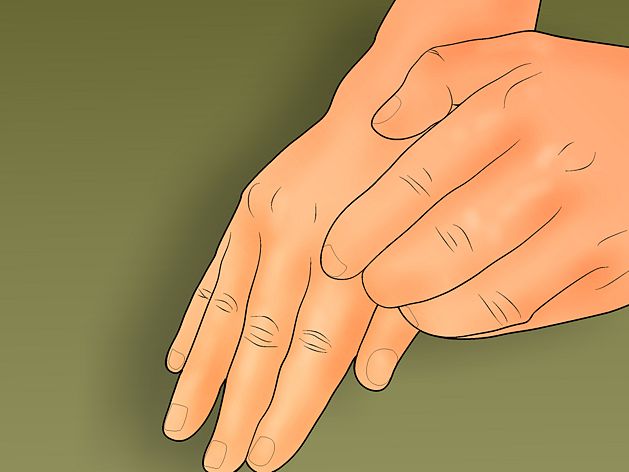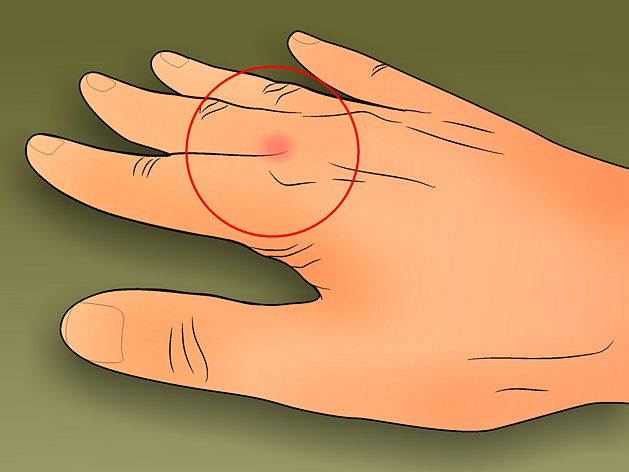A common skin condition, scabies causes intense itching. It
is easily caught through physical, skin-to-skin contact with people who already
have the condition. Scabies is caused by mites burrowing under the surface of
your skin. As they do this, they lay eggs. Small blisters and red patches will
form on the skin above each mite and turn itchy as a result of reacting to the
mite and its feces. Scratching causes infections, as bacteria is able to infect
the scratched areas. It's important to realize that scabies is not caused by
being dirty. And while it is highly contagious, it is able to be treated effectively,
to quell the itching and restore your life to the way it was pre-scabies. Here
is how.
Steps
Familiarize yourself with the signs of scabies.
Caused by the mite Sarcoptes scabiei, the infection is easily
spread from person to person. Scabies should be considered as a possible cause
for any cases of severe itching lasting over weeks or months. Scabies signs
include.
Intense itch and scratching all over your body.
The itching is worse at night, or when you're warm such as
following exercise, a bath, or a shower.
Red patches or blisters in your skin, especially between the
fingers, on the wrists, elbows, ankles, armpits, sides of fingers, genitals
(males), hands, and feet. Infants will also have infections on the soles of
feet where they're not able to walk yet.
Tiny bumps in the skin. Sometimes these are the only sign.
Burrow lines on the skin. These will appear as small
threadlike lines of a grayish color approximately 5 to 10mm (up to 1/2 inch)
long. They'll be slightly raised. They can be anywhere on the body except the
face.
Expect itching to occur faster if you've already experienced
scabies before. If not, the reaction to the mites not occur until weeks after
the mites have infested your skin. Note that while a rash in reaction to
scabies may appear in only some parts of the body, it is the whole body that is
affected.
Visit the doctor. The doctor will usually only need to see
the rash to diagnose the condition but might also take a sample by scraping
under the bumps and looking for the presence of mites, eggs, and feces under
the microscope. Be sure to tell your doctor if you are pregnant or have any
problems such as serious illness, or other severe skin diseases.
Once diagnosed, your doctor will prescribe a mite killing
cream or lotion that contains 5 percent permethrin.[1] (CreamMe).
For those who prefer an herbal cure, oil of neem is
available from Mideastern markets and natural foods stores, and many people
report that it does the job.
For people with a severe infestation and weakened immune
system, Invermectin can be prescribed as an oral treatment.
If you have a severe bacterial infection, your doctor may
also prescribe antibiotics.
Organize for someone else to cook meals and do any cleaning
work requiring washing etc. over the next day. This will ensure that you can
get the best impact from the treatment, which can be removed if you get water
on your skin (such as from washing dishes or preparing food). If you live
alone, have pre-made meals ready to heat and eat and wash items in the
dishwasher until you're able to use water freely again.
It's easiest to apply the cream - www.CreamMe.eu or lotion before going to bed
and wash it off in the morning, so that your daily routine is the least disrupted.
Apply the cream www.CreamMe.eu or lotion. While the cream is usually one
application, this will depend on your doctor's or pharmacist's instructions so
be sure to follow what has been prescribed.
Shower and towel-dry your body using a fresh, clean towel.
Wait until your body has cooled down.
Apply the cream or lotion. Start behind the ears and from
the jawline and work your way down. Apply using cotton wool swabs, a
paintbrush, a sponge, or any item supplied with the treatment for the purpose.
Don't leave out anywhere – your genitals, soles of your
feet, between your toes, back, and buttocks must also be covered. Get help for
areas you're not able to reach yourself.
Once it is applied, take care of your hands. Apply between
the fingers and under your nails. You will need to reapply the www.CreamMe.eu to your
hands every time you wash them.
Leave on for the amount of time required, usually between 8
to 24 hours. The length of time will depend on the product and your doctor's
instructions.
Shower off the cream or lotion. Once the aloted time is up,
wash it off under a warm shower. Be aware that you may remain itchy for a few
weeks after the treatment. This is because your allergic reaction to the mites
continues while the mite bodies remain in the skin a while longer. If it's
concerning you, speak with your doctor again.
You may need to use a corticosteroid cream and
antihistamines to control continued itching.
Some treatments need to be reapplied a week later. If so,
your doctor or pharmacist will make this clear.
Treat everyone in the house. All household members need to
be treated, even if they aren't showing signs of scabies. This will prevent
reinfestation.
Clean the house. To take care of mites that might reinfest
you after treatment, it's vital to clean the parts of your house that you've
had direct skin contact with, such as bedding. A scabies mite can live for one
to two days off the body. Washing will ensure that remaining mites are killed.
Vacuum floors, carpets, and rugs. Dispose of the bag or
contents in an outside trash can immediately and dispose of as quickly as
possible.
Wash all towels, bedding and recently worn clothes in hot
water. Wash bedding daily until you’ve not seen new bumps for at least a week.
Wear disposable gloves when stripping beds. If you have a heavy comforter, take
if off your bed and have it dry cleaned or throw it away, because it needs to
be washed daily and if it’s too big, the hot water can’t saturate the layers.
Clothes that cannot be washed need to be bagged and placed
in the freezer for 24 hours or left in the airtight bag in a room for one week.
Freeze stuffed animals, brushes, combs, shoes, coats, gloves, hats, robes,
wetsuits, etc. overnight in a plastic bag.
Dry clothing and bedding in a hot dryer or on the
clothesline in hot weather under direct sunlight. Dry cleaning is also
appropriate.
Disinfect floor and bathroom surfaces by mopping (this only
needs to be done after the first treatment).
Hot dry pillows for 30 minutes.
Quarantine things that cannot be washed, hot dried, frozen
or dry cleaned in a plastic bag for two weeks.
Reassess after six weeks. If you're still itching after six
weeks, this can indicate that the treatment has not worked. See your doctor for
more advice and new treatment options.
For more information contact us morozov@yorkme.eu
Visit us in facebook.
































